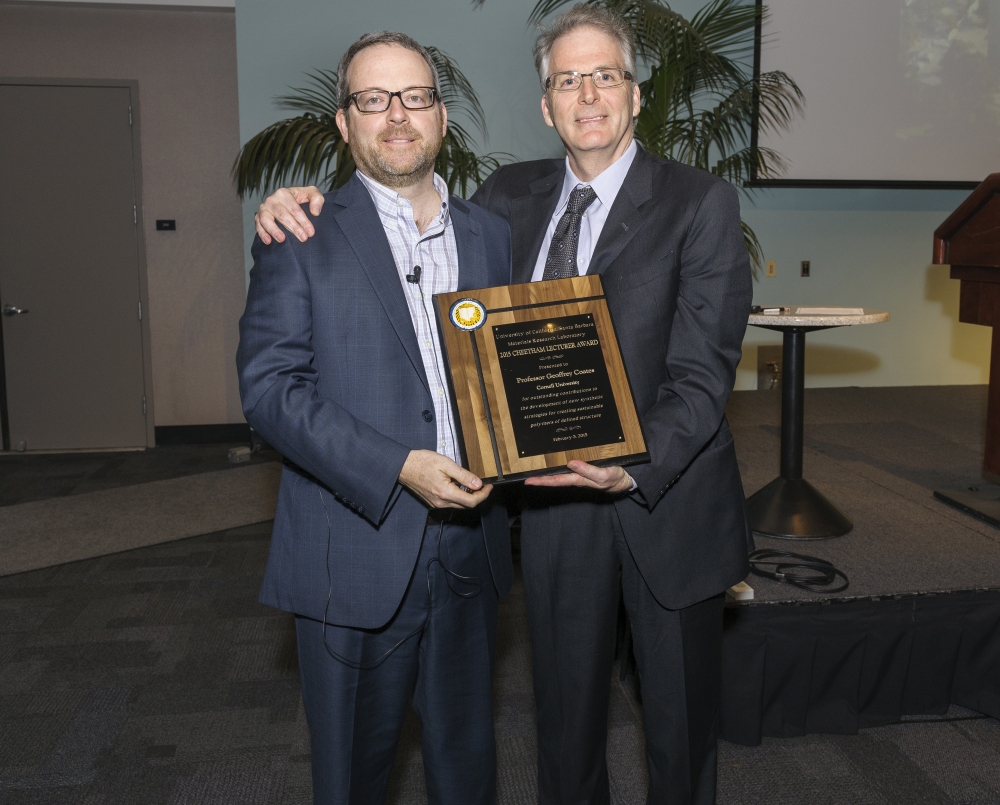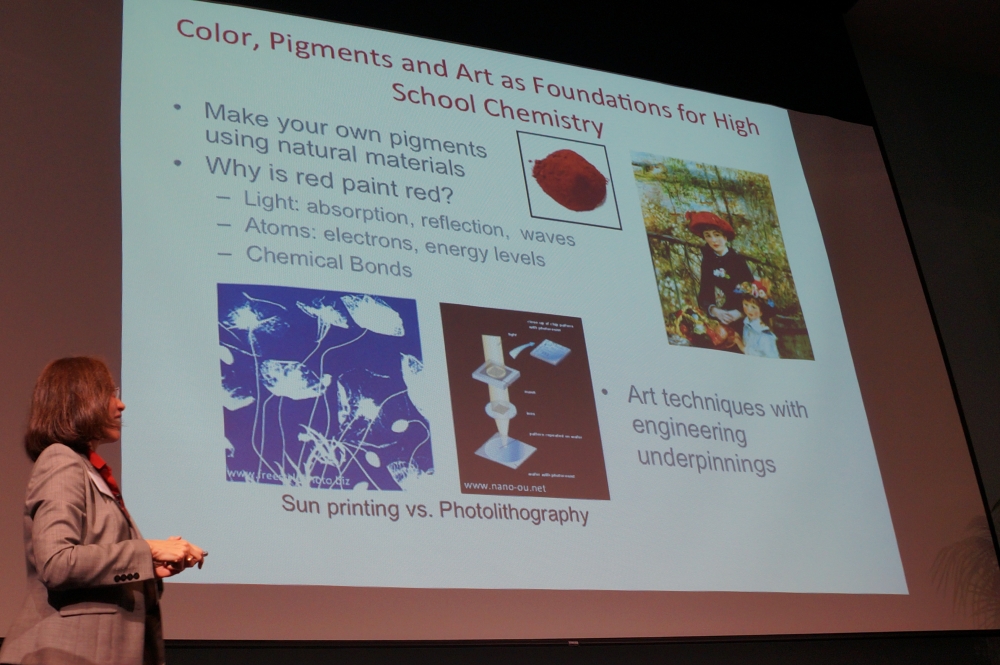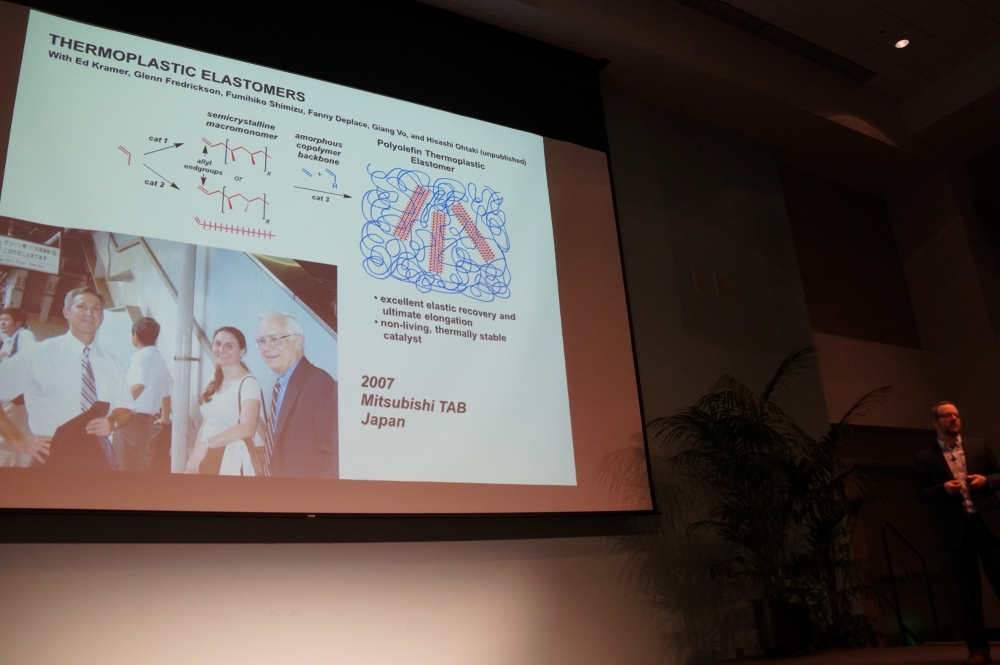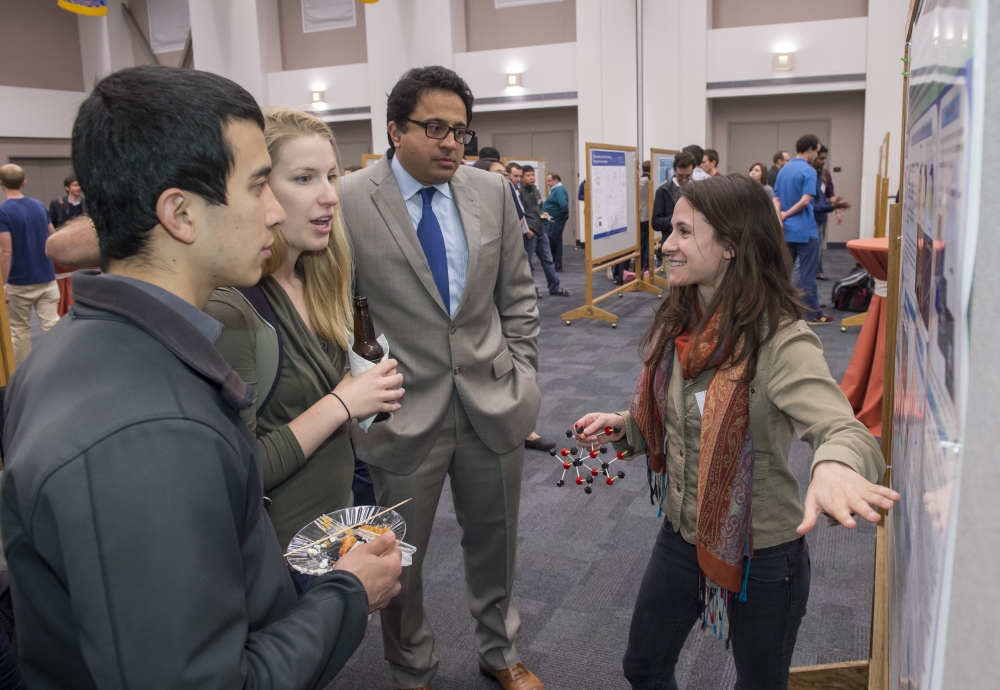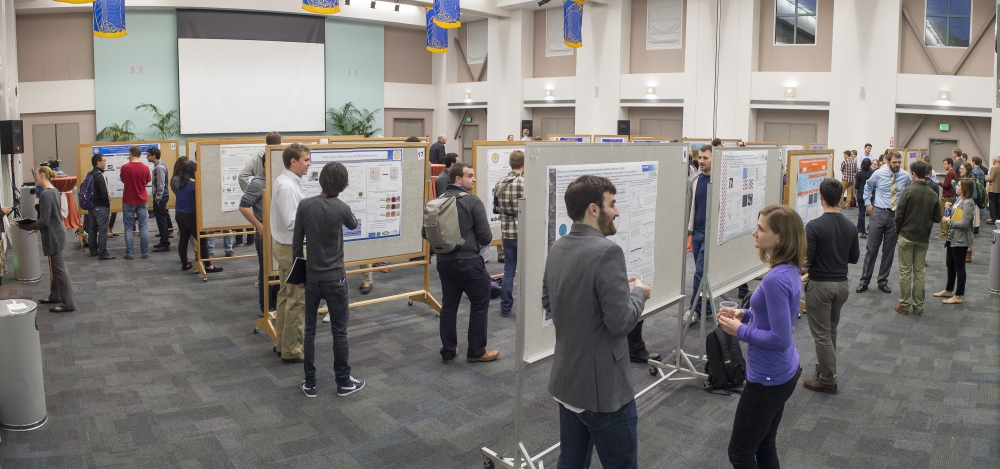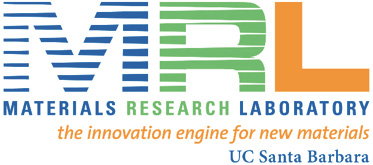Molecular Matters
What do marine mussels, artists’ paints and blue LEDs have in common? They were among the subjects of presentation and conversation at UC Santa Barbara’s Materials Research Outreach Program (MROP), a two-day event held recently at the campus’s Corwin Pavilion.
Part get-together, part learning experience and part networking opportunity, the annual MROP was also an occasion for students, researchers, entrepreneurs and emerging tech companies to catch up on the latest in molecular design. Presenters hailed from several universities in the United States, as well as one research institution in Germany and a couple local tech startups. This year’s event was dedicated to the late Edward Kramer, UCSB professor of materials and of chemical engineering, who was the founder of the MROP.
“Materials really underlie and are the foundational technology for so many things,” said Craig Hawker, co-director of the Materials Research Laboratory (MRL) as well as director of the California NanoSystems Institute at UCSB, and a session chair at the conference. “For example, when we go to the dentist and get a filling, that is an excellent example of materials science. Modern fillings are a plastic and ceramic composite that perform much better and are better for you than the old amalgam ones. It’s all a combination of polymer chemistry, materials science, even mechanical engineering.”
In fact, many of our modern conveniences, which are the result of years — even decades — worth of materials research and development, tend to be taken for granted because of their ubiquity, Hawker added. By way of example, he noted that anyone can go to the store and buy energy-efficient white LED lighting without stopping to consider the decades of research and experimentation UCSB materials professor Shuji Nakamura devoted to perfecting the bright blue LED — the final piece of the puzzle that led to the development of the white LED — an invention for which he won the 2014 Nobel Prize in physics.
But that kind of oversight was not a problem at this conference, during which participants spent two days talking about cutting-edge materials science and its use and contributions in a variety of fields, from medicine and art conservation to manufacturing and energy efficiency. UCSB professor of chemical engineering Samir Mitragotri discussed his work in the development of materials for the next generation of drug delivery, while UCSB research scientist Wei Wei presented on bio-inspired materials that can adhere in wet conditions. Katherine Faber, materials science professor at the California Institute of Technology, talked about advanced analytical techniques used in art conservation.
Geoffrey Coates, professor of chemistry at Cornell University, gave the highlight Cheetham Lecture, reserved for scientists who have made major contributions to materials research that also have had impact on industrial applications. He lectured on advances in the manufacture of new kinds of plastics that address the major concerns regarding the material. “First of all, we could get away from fossil fuel as a source for making plastic and go to renewable feedstocks,” he said. “Second, we could make a material in which we can match the lifetime of the polymer to the use time of the object.”
In addition to the presentations, attendees also participated in poster sessions and had many and various opportunities to toss ideas back and forth and exchange information. “One of the reasons for MROP is that we realize that one of the best products we have is our students,” said Hawker. “And so MROP gives students the chance to talk about industry, make contacts and to learn about jobs.”
It works the other way, too. Companies come to the MROP to seek out the newest and hottest developments as well as the biggest breadth of materials research. This can lead to multiyear initiatives in which companies support research that could pay off in the future. Dow Chemical is one of those companies, having established the Dow Materials Institute at the MRL in 2011 and funding research up to $15 million over five years.
When Kramer started the MROP in 1999, it was called the “Macromolecular Outreach Program Symposium” and served as a means for the MRL to showcase its research to industrial and venture partners. Over the years, it has broadened its scope to include research in fields such as solid-state lighting and microelectronics. More recently, students have been included in the presentations, as have startups that are rooted in student endeavors, often in conjunction with the campus’s Technology Management Program.
“For me as a student, MROP was a brilliant way to capture a brief snapshot of research happening on campus outside of my immediate group and a way to glimpse how research problems were being approached by faculty members and research scientists beyond UCSB’s campus,” said James Rogers, founder and science director of Apeel Sciences. His company’s nontoxic plant-based products aim to extend the viability of fresh produce and cut flowers by preventing water loss and rendering them “invisible” to biostressors.
Intrigued by the entrepreneurial possibilities, and wanting to find a way to give wide access to the organic, environmentally friendly agricultural solution, Rogers relied heavily on networking with the people who could help him push his product, and his growing company, forward.
“For me as an entrepreneur, MROP was an opportunity to reconnect with old colleagues and to forge new connections with the next generation of scientists that we hope to recruit to join our company,” he said.

